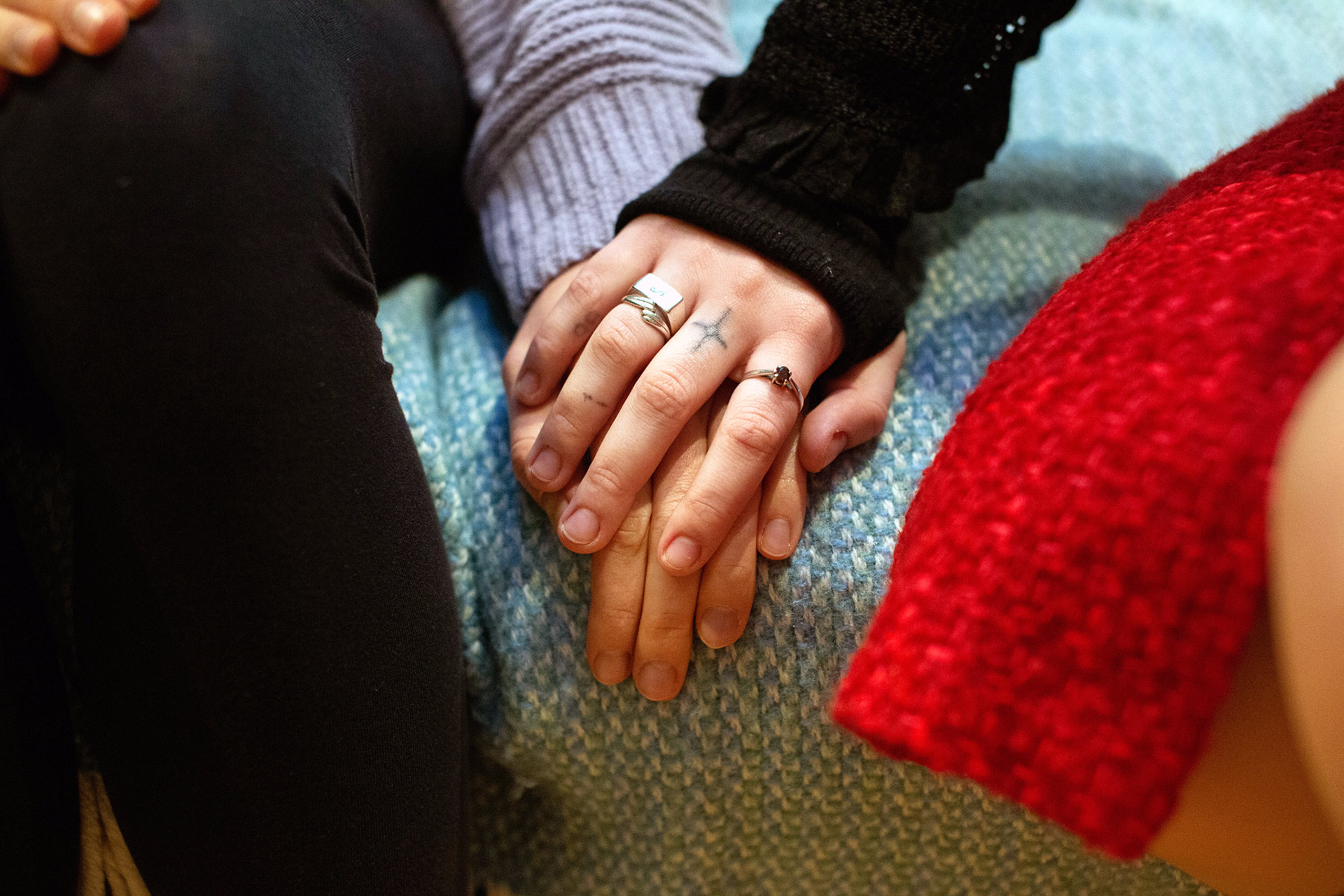
If you are someone who is self-harming
Do you need urgent help?
If you have self-harmed and are in need of urgent immediate medical attention:
Please ring 999.
If you don’t need medical attention but are experiencing crisis and need urgent mental health support:
Please ring 111 or visit www.111.nhs.uk.
For all other support, including reaching out to local services:
Please visit the urgent help section of our website www.solentmind.org.uk/urgent-help
How can I help myself?
Recognise the triggers.
A trigger is something that makes someone act or behave in a certain way.
With self-harm, a trigger is what creates the urge to hurt yourself. Many things can be a trigger, a memory, certain thoughts or feelings, a particular person, an uncomfortable situation and even an important date or anniversary can all give you the urge to self-harm.
Some people might have one or two triggers, others might have lots of different ones depending on the situation. It is important to learn what your own triggers are and the kind of things in your daily life that bring on the urge to self-harm.
Coping with urges
Triggers lead onto the urge to self-harm. Urges come in lots of different ways and it can be helpful to learn to recognise the signs of when urges happen.
Urges can include physical sensations such as shallow breathing, racing heart, feelings of heaviness and nausea. You may have repetitive thoughts such as ‘I want to cut’ or thinking about all the ways in which you could harm yourself. Strong emotions like anger, fear, sadness and despair can all bring on the urge and taking drugs or consuming alcohol could increase the feelings of wanting to self-harm.
Not all urges will turn into self-harm. Urges are strongest in the first five to 10 minutes and can pass if you have distractions and coping strategies ready for when you feel them come on.

When you feel the urge begin, pause and ask yourself some questions:

Why do I feel the need to hurt myself?

What has just triggered the need to hurt myself?

What can I do to ease these feelings?

Do I need to hurt myself?

What else can I do right now that will distract me from wanting to harm myself?
Distractions from self-harm

Self-harm diary
One way to help you understand more about your self-harming behaviours, is to keep a diary.
This can be a hard thing to do as it might bring up challenging feelings and emotions, however writing down what happens before, during and after each time you self-harm can help you to see patterns in your behaviour and work at what gives you the urges to self-harm.
Writing a self-harm diary can be upsetting, so try to be kind to yourself each time you write your thoughts and feelings down.
If you aren’t someone who has kept a diary before and are unsure what to write, it can hard to know where to start.
Use our self-harm diary template as a starting point which has questions and things for you to think about when writing your feelings on paper.
Other distractions from self-harm thoughts:

Creative:
Make a scrapbook, paint, draw, crochet, knit, bake, write a song, poetry, or a story.
Social:
Tell someone how you feel, call or text a friend, spend time with family or a pet, join an online community.
Active:
Go for a walk or run, dance, go for a bike ride, do any exercise that feels helpful and not harmful. Tidy up, clean a room or do some gardening.
Self-care:
Wrap a blanket around yourself, have a bath or a shower, read a book, do skin care, paint your nails, try a breathing exercise, play with a stress ball.
Wounds
How to look after self-harm wounds
When you harm yourself, it is important to look after the wounds to prevent infection.
After self-harming, first control the bleeding by applying pressure to the wound with a clean tissue. This should stop or slow the bleeding right down, however if the wound is bleeding intensely after a few minutes, visit A&E for medical care.
Once you have minimalised the bleeding, you need to clean the cut with water, or an antiseptic wipe then cover with a plaster to stop any dirt getting into the wound. Make sure to change the plaster every day.
Look out for signs that a wound has become infected, these can include swelling, redness and increased pain in the affected area, pus forming from the wound, a high temperature or generally feeling unwell. If any of these symptoms are being experienced, seek medical help as soon as possible.


Scars
How to wear your self harm scars in public
It is a personal choice whether to show scars in public, and we understand it can be extremely daunting to start the process of exposing them.
It’s important to ease into it and you can do this in any way that makes you feel comfortable. This can include wearing short sleeves but covering scars with accessories, showing a trusted friend or family member first before going out in public, or wearing short sleeves around your house first before wearing them outside.
If you do receive comments about your scars when you are out, remember this reflects those people and not you. It is okay if you are asked questions about your scars, for you to say that you do not wish to talk about them.
Reminders for if you are struggling with your scars.
Scars are not something to be ashamed of, if you aren’t ready to show them in public, that is completely fine, but if you are ready to try, it is good to remember that doing this shows how far you have come.
Scars are a part of who you are, and the important thing to work on is how you feel in your own skin and learning to accept the scars.
Disclosing self-harm – the 5 W’s
Dealing with self-harm by yourself can be lonely and overwhelming. It might feel like you are the only one who self-harms, or that that no one else understands.
There are ways to reach out to other people and to ask for support when you want it and sharing your experiences can help your recovery.
It can be hard to decide where to start when you are ready to talk, so break it down into the 5 w’s of who, what, when why and where to help you plan what you would like to share and how you want to do this.
1
Who do I tell?
The first step is to decide who you want to disclose your self-harm to.
This can be anyone you trust and feel conformable talking with. You might want to tell a family member, a friend, or even a colleague. You could also call a support line if you would prefer to talk to someone who doesn’t know you personally.
Talking with someone else can help you to express the feelings you have been dealing with alone. It will also provide you with a support system if you feel anxious about talking to your GP, as having someone who already knows can be there for you when you want to take the next step and seek professional help.
What do I tell them?
This is completely up to you how much you want to share with the other person.
It can help if you know what you would like to say and how you want to say it before you begin a conversation, so think about the things you want to talk about beforehand.
Use our 5 w’s resource to help you write some things down ahead of talking to someone.
Remember you only have to tell someone the information you are comfortable to share. It is normal that whoever you talk to might have questions but remember it is okay to not answer anything you are not ready to discuss.
Talking about your self-harm for the first time can feel daunting. If you want to reach out to someone but are not comfortable talking, you could write down what you want to say instead.
If you are not sure where to begin, try our start the conversation card as a way to let someone know you would like some support.
2
3
When do I tell them?
There might never feel like a perfect time to have a difficult conversation, so don’t put pressure on yourself and try to think about what things could help you in the moment when you do decide to talk to someone.
Once you know who you want to tell, find a time when they are alone and not distracted by something happening in their own lives. Choose a time when you are feeling calm and don’t begin a conversation if you are already feeling angry or upset as this could make it harder for you to begin.
You can either approach someone at any time when you feel ready in the moment, or if you want to feel prepared you could ask them to set aside some time that suits you both where you know beforehand that they are free to listen to you when you want to talk.
Why am I telling them?
There could be many reasons why you decide to tell someone about your self-harm.
You might want someone else to know that you do it, and to understand the reasons why. You might want to seek professional help and would like some support with finding resources or attending a GP appointment. You might even need assistance in looking after your wounds.
Whatever your reason for telling someone, be proud of yourself for taking the steps to getting support.
4
5
Where do I feel comfortable talking about it?
When having a difficult conversation, it’s important to think about where you would like this to take place.
Self-harm is a personal and private thing, so choose a place where you feel comfortable talking out loud and won’t be overheard by anyone other than who you want to share information with.
How Solent Mind can help:
